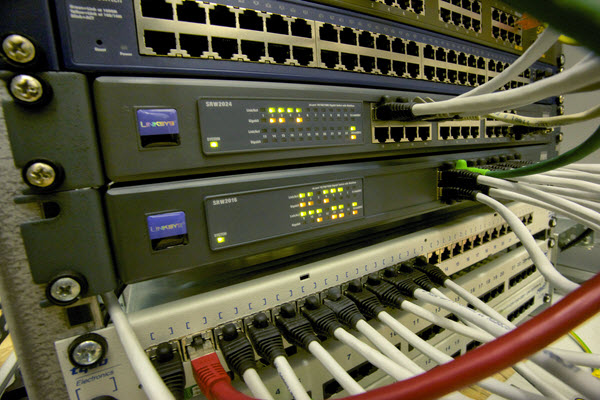
Nothing beats trading from the beach for 3 hours when you’re on vacation. A computer, internet access, and a trading account: that’s all it takes to be a trader these days.
It’s as if an Ethernet cable and an internet modem is all that stands between you and the trading floor. Just plug it in and turn it on. Voila.
Sounds simple, doesn’t it! Not so fast.
What you don’t see… what’s really connecting you to the internet… is a complex spaghetti-and-meatball-plate full of underground wires and web servers. And you have no control over any of it.
Overall, the stability of your internet connection isn’t as much of an issue as it once was. But you can still experience slowdowns and outages from time to time.
Problem is, to effectively trade from your home office, you need a fast, stable, working internet connection.
It’s easy to get wrapped up in the excitement of trading and not think about mundane things like your internet service. But think for a moment about what would happen if your internet stopped working. How would you exit your live trades?
Next time your internet doesn’t seem to be responding, run through this checklist of 6 tasks to get your internet restored quickly and without panic.
1. Test the speed of your connection.
The first step you should take is to visit Speedtest.net. Check your internet speeds (ping, upload, and download rates).
Does your speed test come back with the data rate you’re paying for? Or, is it slower than normal?
Don’t be alarmed if your speed is slightly less than what you’re paying for. However, if you’re paying for 60 mbps (internet speed is measured by how fast data is transferred, or megabits per second) you should be alarmed if your speed is 7 mbps.
2. Review who else is connecting on your network.
You probably have several devices in your household connecting to the same internet network. Ask around to see there are other family members connecting via iPad or Laptop. If they are, ask whether they are experiencing connection issues, too, or if their access has slowed. If it’s just you, it could be an issue with your computer.
Also, ask whether other people are streaming Netflix, Hulu, or Amazon videos. This can slow down your internet speeds. You might want to consider adopting house rules about internet usage during trading hours.
3. Check your modem.
Most internet modems have status lights on the front. One of them will indicate current activity. If it’s flashing, that means other computers/devices are accessing the network. That’s what you want to see.
There will also be a status light to indicate successful connection to your provider. Typically, this light should be solid. If it’s flashing, you need to call your provider.
4. Check your computer’s connections.
Before you spend 3 hours on a tech support call, check your physical connections. Look at the back of your computer to see if the Ethernet cable (normally the blue one) is plugged in.
Unplug and replug the cable at both ends. Make sure you hear the clicking sound, indicating the plug is properly seated.
Could there be a short or a crimped wire? Look for damage or crimping anywhere along the length of the cable.
5. Check your household connections.
Check to see if you have cable splitters in your house that are old, broken or disconnected. Any connection point can become vulnerable over the time. Old splitters need to be replaced by your provider. They cause errors and outages.
6. Is there a problem with your provider?
If you’ve done all the steps above, and you still can’t find the problem, it’s time to call your Internet Provider. Most of the steps above take less than 60 seconds each. Try Steps 1-5 first, before you potentially spend eternity on the phone with customer service.
On the other hand, report any problems you do find right away. There’s no use putting it off.
Just like any other utility company, internet providers have websites you can check that display outage maps. (For example, here’s the link to Comcast’s outage map). You may want to check this first before you call.
Conclusion
You already know my mantra: have a plan before you need it. And now you have one for internet interruptions. Having a plan means you can get back to trading that much faster.
There are more trading computer tips like this in our buyers guide. Check out our “How To Buy a Trading Computer” e-book.
We hope today’s Quick Tip helped you. If you found this helpful, you’ll want to check out the other computer How-To’s I’ve created on this page. You can always call us if you have questions: 800-387-5250
